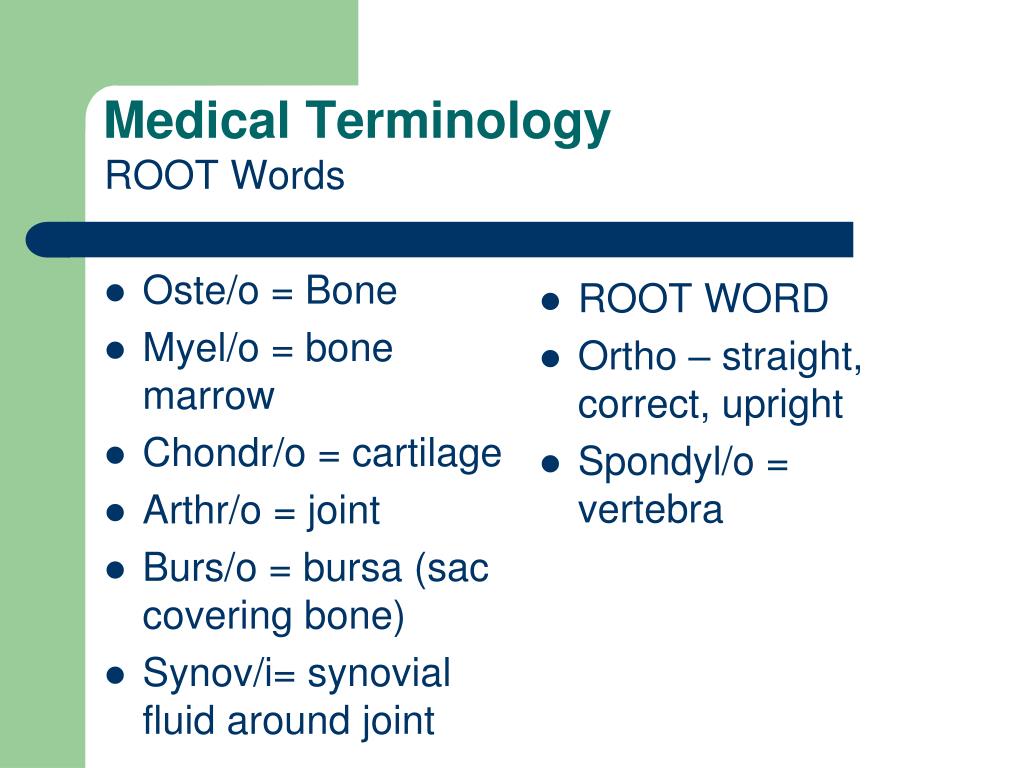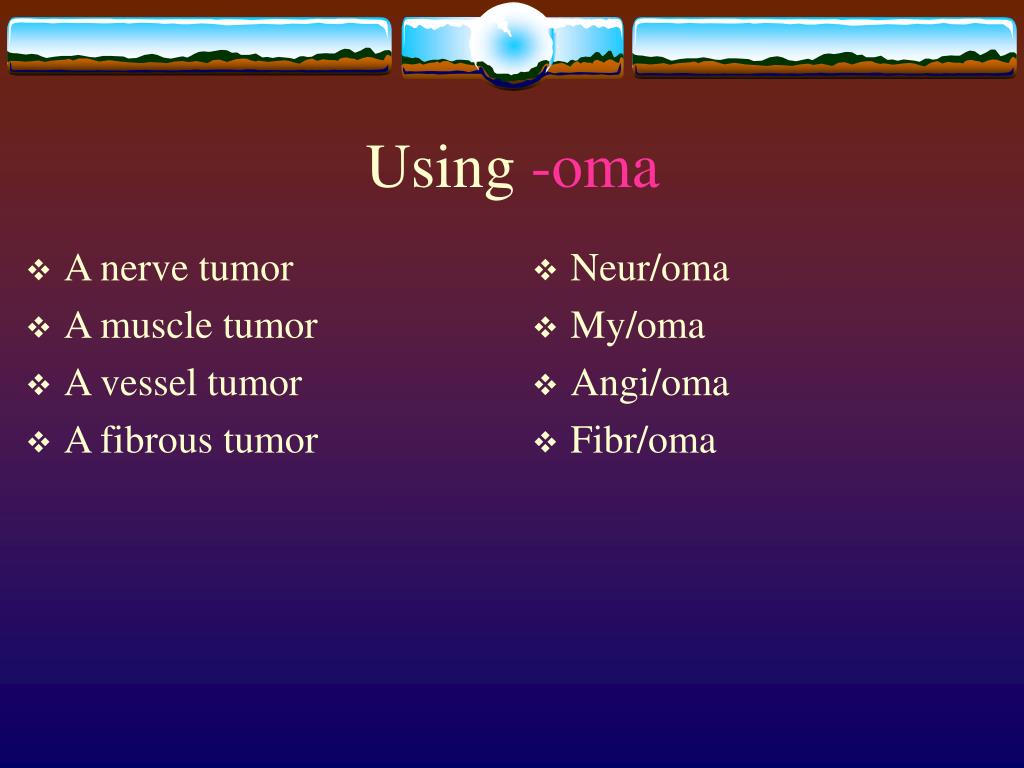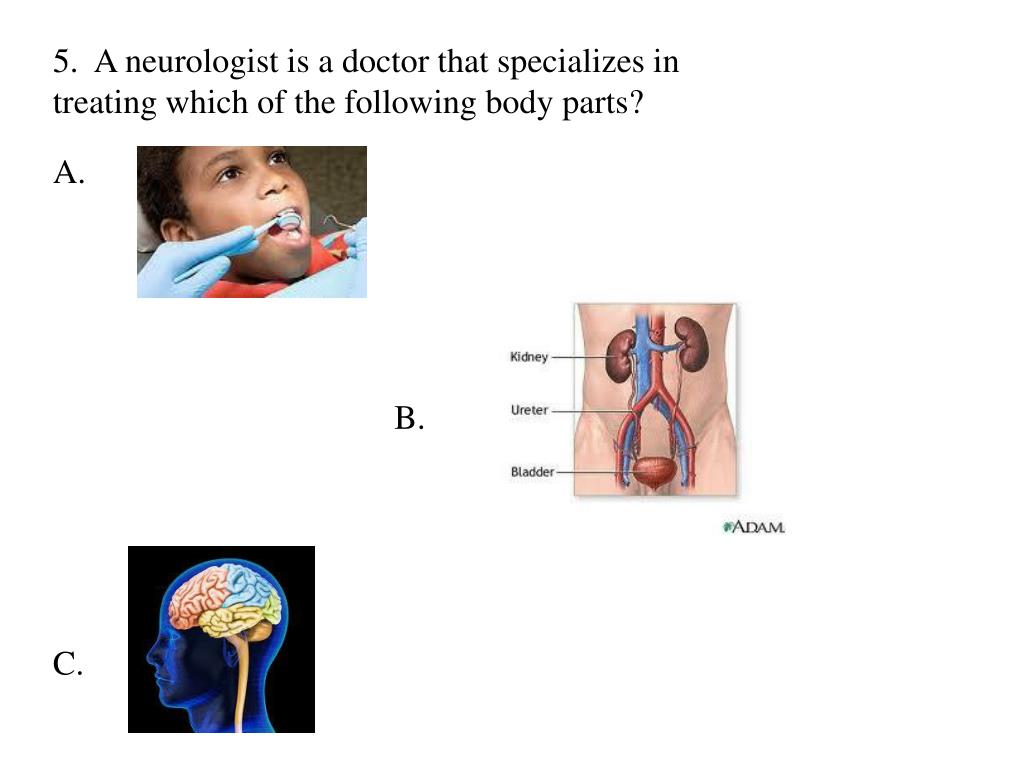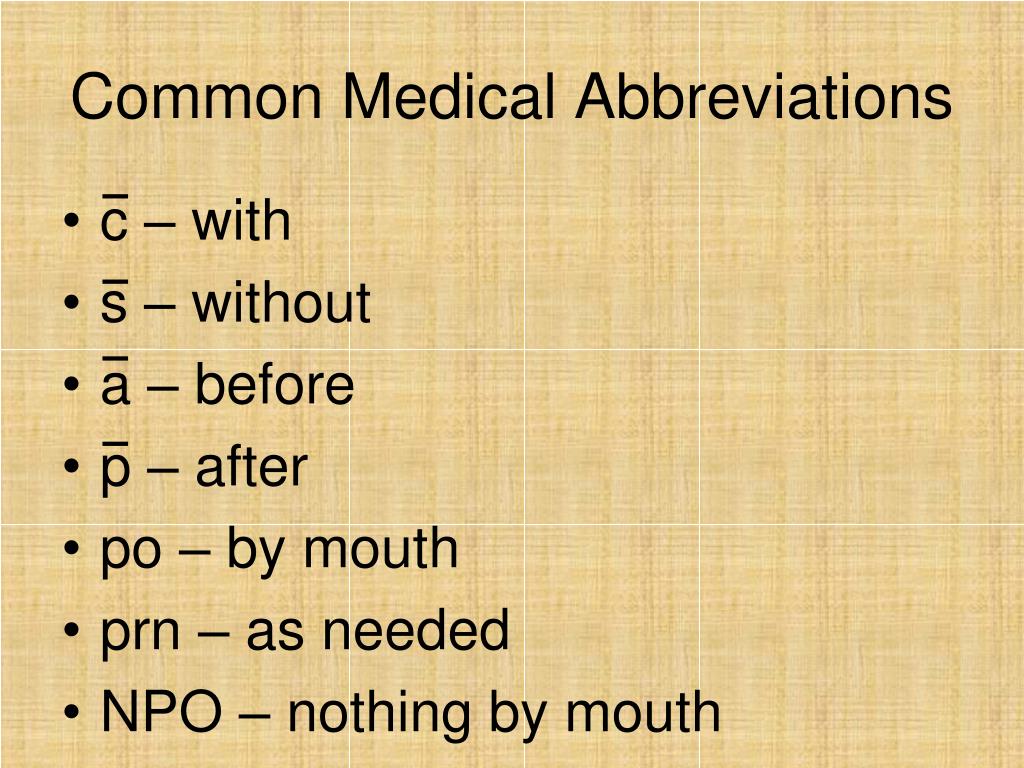

Adenoma: from the Greek meaning "gland".Fibromyoma: the combining form of "muscle" is, therefore "a mass of fibers and muscle" (Pl.Fibroma: from the root meaning "fiber".Myoma: from the root meaning " muscle".Often, the suffix is added to the name of the affected body part, as in lymphoma, cancer of the lymph. Hematoma: from the Greek root meaning "blood". A suffix meaning tumor or cancer, as in carcinoma.The suffix can be found in many medical words, such as: There are other root-suffix combinations that also mean "cancerous". A cancerous mass will be denoted by the addition of the root term meaning "cancer" therefore the combined root and suffix will be. only means a mass and the type of mass, benign or malignant is not implied in the term. It is a general misconception that the suffix or the term are synonymous with " cancer".

It should be noted that the word is originally Latin, and means "swelling" or "bulging". The suffix means "tumor", "mass", or "growth".

"Clinical Anatomy Associates, Inc., and the contributors of "Medical Terminology Daily" wish to thank all individuals who donate their bodies and tissues for the advancement of education and research”. Indian J Dermatol Venereol Leprol (2011) 77:101-3 “Henry Vandyke Carter and his meritorious works in India” Tappa, DM et al. “Henry Gray and Henry Vandyke Carter: Creators of a famous textbook” Roberts S. “A Glimpse of Our Past: Henry Gray’s Anatomy” Pearce, JMS. “The Anatomist: A True Story of ‘Gray’s Anatomy” Hayes W. Click on the image for a larger depiction. The image accompanying this article is a self-portrait of Dr. We are proud to use some of his images in this blog. His legacy is still seen in the images of the thousands of copies of “Gray’s Anatomy” throughout the world and the many reproductions of his work available on the Internet. Personal note: Had history been different, this famous book would have been called “Gray and Carter’s Anatomy” and Dr. Henry Vandyke Carter died of tuberculosis in 1897. In 1890, after his retirement, he was appointed Honorary Physician to the Queen.ĭr. He held several important offices, including that of Dean of the Medical School of the University of Bombay. Carter dedicated the rest of his life to the study of leprosy, and other ailments typical of India at that time. During his tenure with the India Medical Service he attained the ranks of Surgeon, Surgeon-Major, Surgeon-Lieutenant-Colonel, and Brigade-Surgeon.ĭr. In 1858 he joined as an Assistant Surgeon and later became a professor of anatomy and physiology. Carter took the exams for the India Medical Service. Carter never worked again with Gray, who died of smallpox only a few years later.įrustrated, Dr. Carter only received a one-time payment of 150 pounds. Carter was relegated to the position of illustrator by Henry Gray and never saw the royalties that the book could have generated for him. In spite of initially being offered a co-authorship of the book, Dr.

While working on the book’s drawings, HV Carter continued his studies and received his MD in 1856. The book itself, about which many papers have been written, was immediately accepted and praised because of the clarity of the text as well as the incredible drawings of Henry Vandyke Carter. Having seen the quality of HV Carter’s drawings, Henry Gray teamed with him to produce one of the most popular and longer-lived anatomy books in history: “Gray’s Anatomy”, which was first published in late 1857. George’s Hospital in London, where he met Henry Gray (1872-1861), who was at the time the anatomical lecturer. It says wait times for treatment in Ontario – including surgeries – are currently longer than provincial guidelines, which is leading to poorer health outcomes and increased anxiety among patients.Having problems to finance his medical studies, HV Carter trained as an apothecary and later as an anatomical demonstrator at St. The association says survival rates of women with breast cancer decline if the detection of the disease is delayed. The OMA says nearly half of breast cancer cases diagnosed at the Ottawa Hospital before the pandemic were detected through mammogram screening, but that number dropped to less than one-third during the pandemic.Ībout 71 per cent of patients were diagnosed at the Ottawa Hospital after showing symptoms of breast cancer during COVID-19. The Ontario Medical Association (OMA) says approximately 400,000 fewer mammograms to screen for breast cancer were completed in the province during the pandemic than expected.Įven though screenings have returned to normal levels, the organization is warning that the temporary decrease in testing has led to cases of breast cancer that were more advanced at the time of diagnosis.


 0 kommentar(er)
0 kommentar(er)
